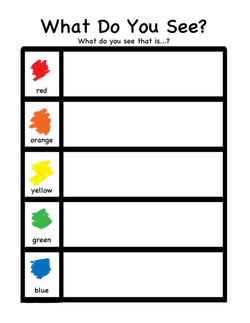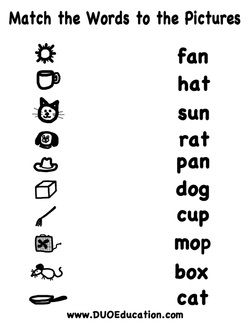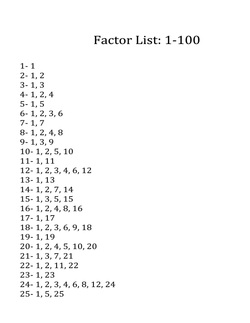
The idea is to get young children to notice and identify things that are various colors. It is like a treasure hunt. And, who doesn’t like a treasure hunt. And, if it is a beautiful day, like today is for me, I propose you take the activity outside.
This lesson can be done in a variety of ways. You could have a clipboard and pencil for each child. Then, have the children draw the things that they see in the correct spaces. Or, you could all just go for a walk around the schoolyard, or house, or town; whatever is safe and realistic to do. While you are walking, have children point out the different things that are the various colors on the chart.
If you can’t make it outside, don’t fret. This activity can be done anywhere. Give each child the recording chart and have him or her look around the school, the room, or the house to find, identify, and draw the various objects that fit into the chart. Another possibility would be to give each child a book and have him or her flip through the book to notice objects that are the various colors from the chart.
When the children are finished drawing each item, help them label the objects. If they are to the point where they know most of the letters and letter sounds ask them to try labeling their own objects. If not, then, dot the word for each object so they can trace the letters in the word. Don’t forget to have them color the objects!






 RSS Feed
RSS Feed